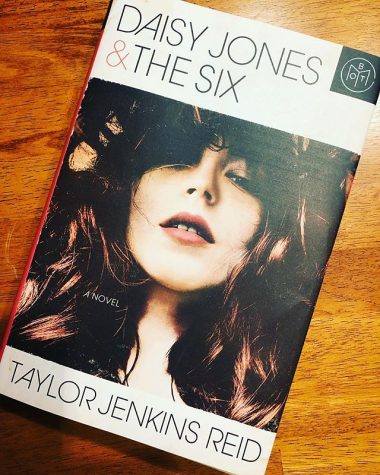Pixar’s Coco: A Review
Pixar’s latest hit, and the all-time highest grossing animated film in Mexico, Coco has made quite a splash since its release on November 22, 2017. After mixed reviews for some of their previous films, like the highly anticipated sequel Finding Dory and prehistoric tale The Good Dinosaur, Pixar needed a homerun. With a 97% on Rotten Tomatoes and topping $71.2 million, bypassing Justice League, Coco was exactly the boost Pixar needed.
Before delving into the actual movie, it is impossible to not talk about the polarizing short that came before: Olaf’s Frozen Adventure. Based off the 2013 Disney hit Frozen, the short follows titular character Olaf as he tries to find a Christmas tradition for Anna and Elsa after they discover that their years apart may have an everlasting impact on their Christmases. Olaf searches across the kingdom for a Christmas tradition, noticeably racking up fruit cakes and candy canes to bring holiday cheer. The short is filled with jokes and songs, but it clocks in at 21 minutes. Most film shorts range between 5 to 7 minutes, so you could hear the frustrated grumbles midway through the short. Whether or not you like Olaf, the shirt was entirely too long, and put an immediate damper on Coco. In fact, it was so hated, that the short was removed in several theaters in Mexico. If you don’t want to endure Olaf and friends, come to the theater a bit later than usual; you’re not missing out.
The moment Coco starts, it is abundantly clear that the culture of Mexico is going to a major theme in the movie. The film artistically crafts a prologue using papel picado to illustrate the past of a former family man turned musician. The man left his family to pursue a career in music, leading his heartbroken wife to become a master of shoemaking, and passing down the talent from generation to generation. She cursed music, and banned it from the family. This ban, as well as the love of shoemaking, has stuck with the family for decades. However, a young boy named Miguel stepped into change that. His love of music has isolated him from his family to the point where he values it over them. Miguel’s passion of music stem from his musical idol, Ernesto de la Cruz. When a picture of his family with Cruz’s famous guitar comes in the possession of Miguel, he knows that he is meant to make music. He attempts to steal the guitar, but instead is transported to the land of the death, where all those who have died live. Out of place and running out of time, Miguel teams up with Hector, one of the dead, to get back to his family.
The above summary of the movie doesn’t even cover half of the plot. The film has a very layered story, especially for a kid’s film, and there are twists and turns throughout the film that keep the audience guessing. Coco, however, does a shockingly good job at keeping the plot easy to understand and enjoyable to watch. The main strength of the movie is its heart. There are lots of small scenes that make the movie shine. The emotion runs high throughout, but it is balanced with appropriate amounts of humor and action for a family film. The main characters, Miguel and Hector, are strong, interesting, and likable characters. They’re easy to root for, and the main conflict of the film is closely tied to them. The side characters are another strong point, especially the titular great-grandmother, Coco. The film has a sense of completeness that few adult rated films have.
On a more shallow note, the film looks incredible. The colors pop beautifully and the shot of the Land of the Dead is an undeniably awe-inspiring moment. The characters’ designs are cartoony, but they blend excellently to the emotions that a character is feeling. Coco has a very heavy emphasis on music, more so than any other Pixar film. However, the movie fires on all cylinders. The songs were fun, and they lifted the film up instead of dragging it down like other musical segments do. The songs had a heavy Hispanic influence which added to the feel of the film. From a visual and musical standpoint, Coco was nearly flawless.
Coco‘s, as a film, is very balanced in terms of emotion and humor. This is great, and keeps the film interesting, but several have complained about not having that “big” laugh out loud moment or emotional moment. In a movie like UP, the film has the incredibly heartbreaking, attention grabbing opening sequence that tells the lives and struggles of married couple, Carl and Ellie. Personally, I think the film does have a moment like UP‘s. It comes at the end of the film, and is not necessarily heartbreaking, but it did cause a couple tears on my behalf. In terms of humor, there are definitely jokes that land in the film, but it is among Pixar’s least humorous. Is this a bad thing? Not necessarily. It’s a fun film that lets is characters breath and develop without constant humor.
The only other criticism that I can truly make is less about Coco, and more about Disney as a whole. Coco’s antagonist is similar to recent Disney films, as it is more of a “Surprise”, and isn’t at all clear in the first act of the film. There is nothing wrong with this; in fact, it makes for an interesting plot. However, dating back to Frozen, it seems to be only kind of villain Disney or Pixar wants to do. Coco continues this trend, but does it relatively well, so I can’t exactly fault the movie itself.
Overall, I’d give Coco an A rating. It’s incredibly well made, interesting, balanced, and just feels like a complete film. Yes, the short before it is entirely too long, and maybe the humor is more lacking than Pixar’s earlier films, but Coco has heart. I’d highly recommend it, and the movie was the rebound Pixar needed.






